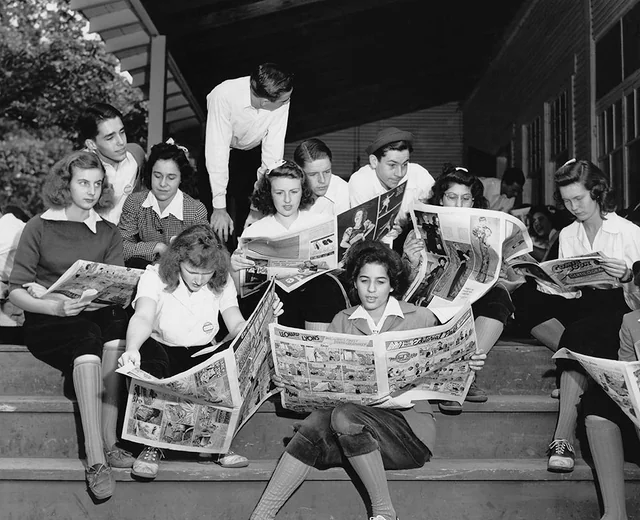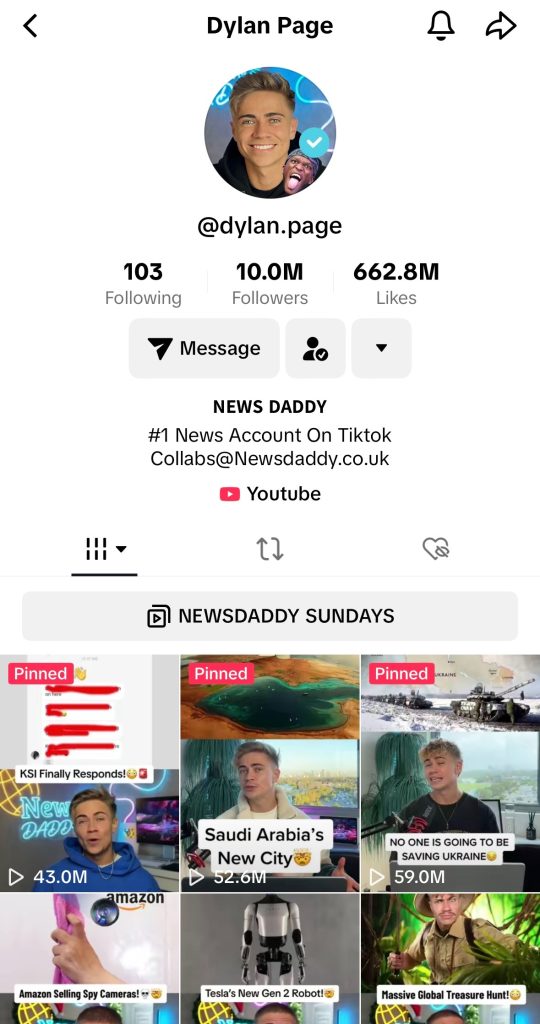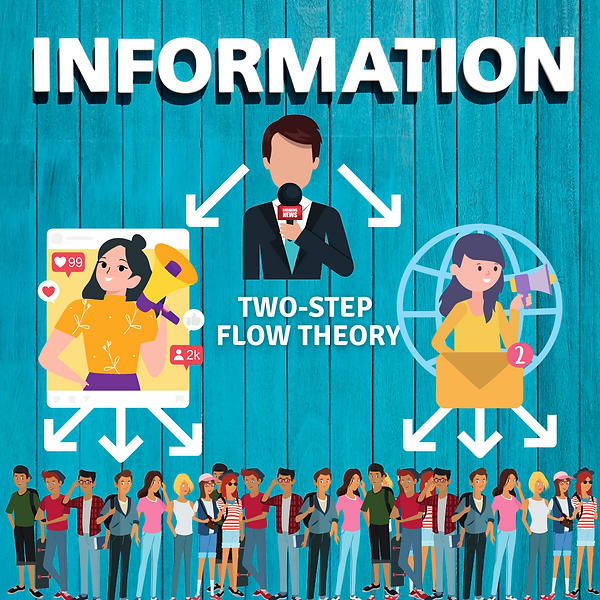The 2-step flow theory formulated in 1948 by Paul Lazarsfeld, is the idea that information goes through two steps before it influences people, he believes audiences donвАЩt necessarily think for themselves. This theory states their first step is that mass media (adverts, films, news) are seen by opinion leaders. Opinion leaders are active media users that are liked, respected, and trusted in society, they tend to have power and influence over us, friends, celebs, role models etc. The second step is opinion leaders interpret this information and pass onto the general population what they decide is important and relevant. Opinion leaders have a lot of power and influence on the general audience to form an opinion on a topic, this could be an advantage to the mass media if the opinion leaders can be controlled, which we will explore more later. This theory suggests audiences donвАЩt receive messages directly from the media but instead prefer to hear it from trusted opinion leaders.

This theory was developed way before social media and television, in 1940s researchers looking into the US election found most voters got their information from other people who read about the candidates in the newspapers rather than them reading the newspapers themselves. Lazarsfeld, Berelson, and Gaudet concluded personal contacts appear to have been both more frequent and more effective than the mass media in influencing voting behaviour. Word-of-mouth spread of information plays a far important role in the communication process and that mass media have spare influence on the general population.

Media has evolved a lot, but that influence hasnвАЩt. In fact, this theory is becoming even more prominent in the day of easily spread fake news and mistrust of the media, it is more common for people to get information from people they trust versus the mass media. With the rapid evolution of social media influencers, they act as contemporary opinion leaders. For example, a well-respected famous YouTuber known as KSI, only follows one person on TikTok, Dylan Page, a self-created news channel on the platform. This caught the attention of many KSI fans, 11+ Million to estimate, which boosted DylanвАЩs page to be the top news channel on TikTok. DylanвАЩs lack of bias opinion, straight forward factual spread makes him seem a trustworthy figure to gain information from.
A recent two step communication example is Bella Hadid, a famous model, speaking out on supporting Palestine. In her Instagram post she urged her followers to вАЬdefend humanity and compassionвАЭ, she further empathised that the governments corrupt. Trusted opinion leaders like Bella with a celebrity status and large social media following have extensive influence, such opinions spread it further breaks the trust between the general population and the mass media. Bella Hadid’s activism may strike a chord with her followers, but it’s important to recognise that viewpoints can be reinforced in groups of like minds, leading to filter bubbles that prevent exposure to a wider range of viewpoints.
Overall opinion leaders are easily quite influential in getting people to change their attitudes as they appear to be similar to those they influence. The two-step flow theory has improved peoples understanding of how the mass media influence decision making. The theory cleared the ability to predict the influence of media messages on audience behaviour and helped explain why certain media campaigns could have failed to influence audiencesвАЩ attitudes and behaviour. The two-step flow theoryвАЩs limitations of only considering the first 2 steps gave way to the multi-step flow theory of mass communication or diffusion of innovation theory.
Reference list:
- Britannica, T. Editors of Encyclopaedia (2023, August 26). Paul Felix Lazarsfeld. Encyclopedia Britannica. https://www.britannica.com/biography/Paul-Felix-Lazarsfeld
- Lazarsfeld, P., Berelson, B. & Gaudet, H. (1968). The PeopleвАЩS Choice: How the Voter Makes Up His Mind in a Presidential Campaign. New York Chichester, West Sussex: Columbia University Press. https://doi.org/10.7312/laza93930
- https://www.tiktok.com/@dylan.page?lang=en
- https://www.instagram.com/bellahadid/?hl=en
- Hebert, O. (2023, October 26). Retrieved from Independent: https://www.independent.co.uk/life-style/bella-hadid-speaks-out-palestine-b2436792.html
- Multi-step flow theory. (2023, june 23). Retrieved from Wikipedia: Hebert, O. (2023, October 26). Retrieved from Independent: https://www.independent.co.uk/life-style/bella-hadid-speaks-out-palestine-b2436792.html
- Diffusion of innovations. (2023, november 28). Retrieved from Wikipedia : https://en.wikipedia.org/wiki/Diffusion_of_innovations


Your inclusion of the historical context behind the Two-Step Flow Theory is excellent, providing readers with a solid foundation. To add even more depth, you could briefly touch upon how the theory has evolved over time, especially with the advent of social media and other technological advancements. This could help readers connect the theory’s historical roots to its modern-day implications.
The real-world examples of KSI and Bella Hadid effectively illustrate the continued relevance of the Two-Step Flow Theory. Consider expanding on these examples by providing more details on how these opinion leaders influence their followers. This could involve exploring specific instances where their opinions or endorsements had a measurable impact on public perceptions.
Your blog aptly discusses how the Two-Step Flow Theory sheds light on the influence of opinion leaders in shaping public attitudes. To enhance this discussion, you might consider exploring more deeply the potential consequences of this influence. For instance, how might it impact public discourse, political opinions, or consumer behavior in the long run?